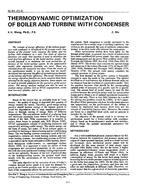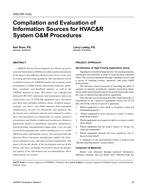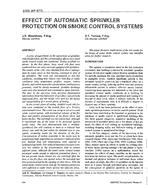The phenomenon of warm air rising and cold air falling is described as air stratification. Removing the warm air layer near the roof and mixing it with the cold air near the floor can result in significant energy savings. This report provides an evaluation of environmental conditions and energy savings using five large diameter fans in a commercial manufacturing and warehousing facility in the Toronto area during the winter/spring of 2008.
The use of destratification fans during cold weather reduced ceiling temperatures by 4.0°C (7.2°F) and increased floor temperatures by 1.5°C (2.7°F). Operating the fans in the forward or downward direction provided improved temperature destratification versus operating fans in the reverse direction. A total temperature profile difference of less than 0.5°C (0.9°F) was achieved with the fans in the forward direction. Use of the five destratification fans provided an average gas savings of 19.3% of the entire warehouse consumption over the test period from Feb to Mar 2008 for an estimated annual natural gas savings of 16,097 m3 (5,682 therm) or $6,440 at $0.40/m3 ($1.13/therm).
The electrical consumption to operate the five fan motors represents a parasitic loss of approximately 5% of total cost savings. It is logical to suggest that a portion of the parasitic losses are offset by electrical savings through the reduced use of auxiliary heating equipment such as blower motors on space heating equipment.
Units: Dual
Citation: ASHRAE Transactions, vol. 115, pt. 2, Louisville 2009
Product Details
- Published:
- 2009
- Number of Pages:
- 6
- File Size:
- 1 file , 310 KB
- Product Code(s):
- D-LO-09-048


